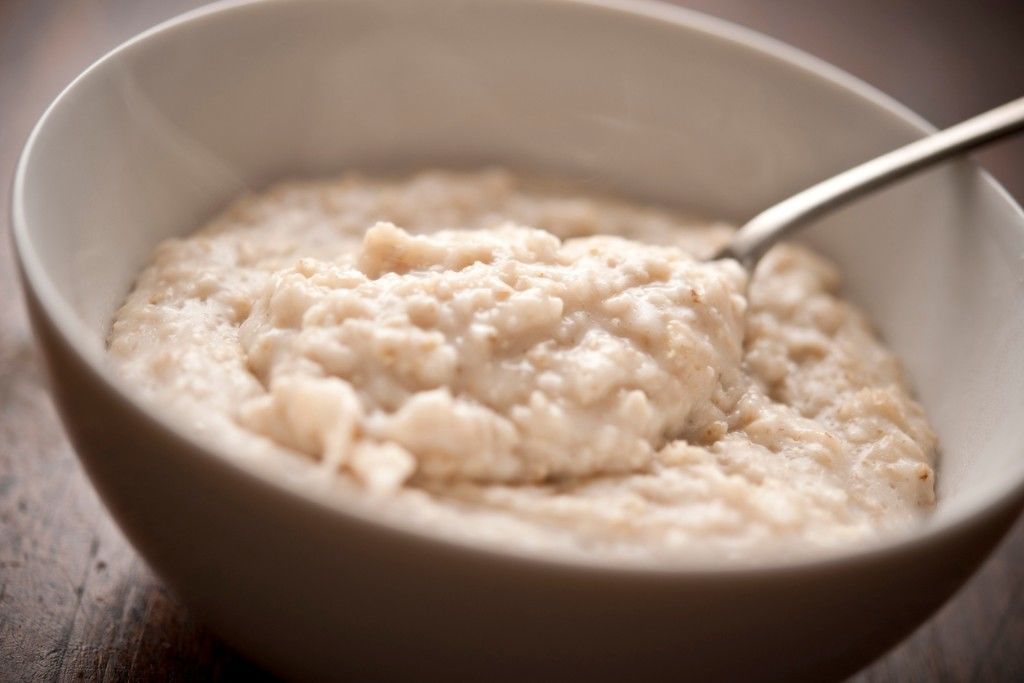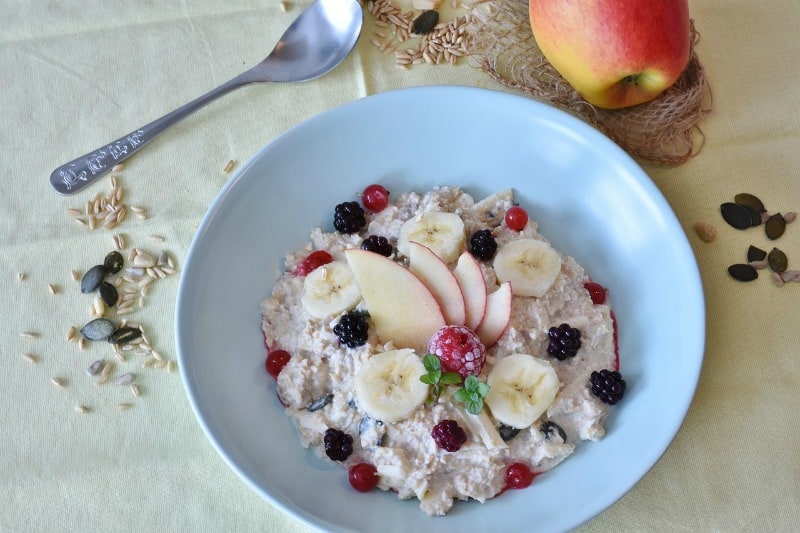British Porridge Recipe
British porridge recipe is more than just a simple breakfast; it’s a journey through time, a taste of tradition, and a testament to the adaptability of food. From its humble beginnings as a staple for the working class to its modern-day reinvention as a trendy and healthy breakfast option, porridge has held a special place in British culture for centuries.
This post will delve into the fascinating history of British porridge, exploring its evolution, regional variations, and cultural significance. We’ll also uncover the secrets to making the perfect porridge, from choosing the right ingredients to mastering different cooking techniques. Whether you’re a porridge enthusiast or simply curious about this iconic British dish, get ready to discover a world of flavors and possibilities.
History and Origin of British Porridge
British porridge, a humble yet hearty breakfast staple, boasts a rich history that spans centuries. Its origins can be traced back to ancient times, where it was a vital source of sustenance for people across the British Isles. Over time, porridge evolved from a simple peasant food to a more refined dish enjoyed by all classes.
Early Origins and Evolution

The earliest forms of porridge were likely made with grains like barley and oats, readily available in the British climate. These grains were ground into coarse flour and cooked in water or milk to create a thick, filling gruel. Porridge was a staple food for both the poor and the wealthy, providing essential calories and nutrients.
During the Middle Ages, porridge remained a popular dish, often served with butter, honey, or other simple toppings. As trade expanded, new ingredients like spices and dried fruits were introduced, adding flavor and variety to porridge recipes. Regional variations emerged, with each region developing its own unique way of preparing and serving porridge.
Regional Variations and Traditions
Across Britain, different regions developed distinct traditions surrounding porridge. In Scotland, oatmeal porridge, known as “porridge,” became a national symbol. It was typically cooked over an open fire in a cast iron pot, resulting in a hearty and flavorful dish.
In Wales, a similar dish called “bara brith” was made with oats and dried fruits, often served with butter and cheese.
In England, porridge was often made with barley or wheat, and served with milk, sugar, and sometimes spices. In the north of England, “oatcakes,” thin flatbreads made from oatmeal, were a common accompaniment to porridge.
Modern Porridge: From Staple to Breakfast Option
With the advent of modern food processing and the rise of other breakfast options, porridge gradually shifted from a staple food to a more specialized breakfast choice. However, it remains a popular and versatile dish, appreciated for its simplicity, nutritional value, and adaptability.
Today, porridge is available in various forms, from instant oats to steel-cut oats, offering a range of textures and flavors. It can be customized with an array of toppings, making it a delicious and healthy start to the day.
Types of British Porridge
British porridge comes in a variety of forms, each with its own unique characteristics and preparation methods. While oatmeal is the most common type, other variations like oatcakes and porridge made with other grains offer diverse textures and flavors.
Oatmeal Porridge
Oatmeal porridge is the most common type of British porridge. It is made from rolled oats, which are steamed and flattened to create a quick-cooking grain. Oatmeal porridge is known for its creamy texture and mild, nutty flavor.
Oatcakes
Oatcakes are thin, flatbreads made from oatmeal, water, and sometimes salt. They are traditionally cooked on a griddle or in a frying pan until golden brown and crispy. Oatcakes can be enjoyed on their own or served with cheese, butter, or jam.
Other Porridge Variations
While oatmeal is the most popular, other grains can also be used to make porridge. Barley porridge is a traditional dish in some regions of Britain, offering a heartier and more robust flavor. Wheat porridge, while less common, can also be enjoyed for its slightly sweet and chewy texture.
Comparison of British Porridge Types
| Type | Texture | Flavor | Nutritional Value |
|---|---|---|---|
| Oatmeal Porridge | Creamy, smooth | Mild, nutty | High in fiber, protein, and vitamins |
| Oatcakes | Crispy, slightly chewy | Savory, slightly nutty | High in fiber and protein |
| Barley Porridge | Hearty, chewy | Robust, earthy | High in fiber, protein, and vitamins |
| Wheat Porridge | Chewy, slightly sweet | Mild, slightly sweet | High in fiber and protein |
Ingredients and Variations

A basic British porridge recipe requires only a few essential ingredients, but the possibilities for variations are endless. By adding different fruits, nuts, seeds, and spices, you can create a unique and delicious porridge bowl every time.
Essential Ingredients
The essential ingredients for a basic British porridge recipe are:
- Oats (rolled, steel-cut, or quick-cooking)
- Liquid (water, milk, or a combination of both)
- Salt (optional)
Common Variations and Add-Ins, British porridge recipe
To customize your porridge, you can add a variety of ingredients, including:
- Fruits:Berries, bananas, apples, pears, or stone fruits
- Nuts and Seeds:Almonds, walnuts, pecans, pumpkin seeds, chia seeds, flax seeds
- Spices:Cinnamon, nutmeg, ginger, cardamom
- Sweeteners:Honey, maple syrup, brown sugar
- Other Add-Ins:Chocolate chips, dried fruits, peanut butter, yogurt
The Role of Liquid
The type of liquid used in porridge affects its consistency and flavor. Water creates a lighter and more neutral porridge, while milk adds richness and creaminess. You can also use plant-based milk alternatives like almond milk or soy milk for a different flavor profile.
Cooking Techniques
British porridge can be cooked using various methods, from traditional stovetop cooking to modern techniques like slow cooking or microwaving. Each method offers a slightly different texture and flavor.
Traditional Stovetop Cooking

The traditional method of cooking porridge is on the stovetop. To make stovetop porridge, combine oats and liquid in a saucepan and bring to a boil. Reduce heat and simmer, stirring occasionally, until the oats are cooked through and the porridge reaches the desired consistency.
Slow Cooker Porridge
Slow cookers offer a convenient way to cook porridge. Simply combine oats, liquid, and any desired add-ins in a slow cooker and cook on low heat for several hours. This method results in a creamy and flavorful porridge.
Microwave Porridge
Microwaving is a quick and easy way to cook porridge. Combine oats and liquid in a microwave-safe bowl and cook on high for 1-2 minutes, stirring halfway through. This method is best for quick-cooking oats.
Tips and Tricks
- Use a good quality pot with a thick bottom to prevent scorching.
- Stir frequently to prevent sticking.
- Add salt to enhance the flavor.
- Experiment with different ratios of oats to liquid to achieve the desired consistency.
- Let the porridge cool slightly before serving to allow the flavors to develop.
Serving Suggestions
British porridge is a versatile dish that can be enjoyed for breakfast, lunch, or even as a dessert. With a little creativity, you can create endless variations of this classic breakfast.
Breakfast Options
For a traditional breakfast, serve porridge with a dollop of butter, honey, or maple syrup. You can also add fresh or dried fruit, nuts, or seeds for extra flavor and texture.
- Berry and Almond Porridge: Top with blueberries, raspberries, and sliced almonds.
- Apple Cinnamon Porridge: Add diced apples, cinnamon, and a drizzle of honey.
- Banana and Peanut Butter Porridge: Top with sliced bananas and a spoonful of peanut butter.
Lunch and Dessert Ideas
Porridge can also be enjoyed for lunch or as a dessert. For a savory lunch, try topping porridge with cheese, savory toppings, or even a poached egg. For a sweet dessert, consider adding chocolate chips, dried fruits, or a dollop of whipped cream.
- Savory Cheese Porridge: Top with crumbled cheese, a drizzle of olive oil, and a sprinkle of herbs.
- Chocolate Chip Porridge: Add chocolate chips, a drizzle of honey, and a sprinkle of chopped nuts.
- Fruit Compote Porridge: Top with a warm fruit compote made with berries, apples, and spices.
Visual Guide of Serving Suggestions
Imagine a visual guide with images of different serving suggestions, showcasing the versatility of porridge. You could have images of porridge topped with berries and almonds, apple cinnamon, banana and peanut butter, cheese and herbs, chocolate chips and nuts, and a fruit compote.
Each image would be captioned with the corresponding serving suggestion.
Nutritional Value and Health Benefits
British porridge is a nutritious and wholesome breakfast option that offers a range of health benefits. Its high fiber, protein, and vitamin content makes it a satisfying and energizing meal.
Nutritional Benefits
Porridge is a good source of:
- Fiber:Oats are rich in soluble fiber, which helps regulate digestion, lower cholesterol, and promote satiety.
- Protein:Porridge provides a moderate amount of protein, essential for building and repairing tissues.
- Vitamins and Minerals:Oats contain essential vitamins and minerals, including iron, zinc, magnesium, and B vitamins.
Health Benefits
Regular consumption of porridge can contribute to:
- Improved Digestive Health:The high fiber content in oats promotes regular bowel movements and helps prevent constipation.
- Lower Cholesterol Levels:Soluble fiber in oats can help lower LDL (bad) cholesterol levels, reducing the risk of heart disease.
- Blood Sugar Control:The slow-releasing carbohydrates in oats help regulate blood sugar levels, making porridge a good choice for people with diabetes.
- Weight Management:Porridge is a filling and low-calorie breakfast option, which can help with weight management.
Nutritional Information
| Type | Calories | Fiber (g) | Protein (g) | Iron (mg) |
|---|---|---|---|---|
| Oatmeal Porridge (1 cup) | 150 | 5 | 5 | 2 |
| Oatcakes (1 serving) | 100 | 3 | 3 | 1 |
| Barley Porridge (1 cup) | 170 | 6 | 6 | 3 |
Cultural Significance and Modernity
British porridge holds a special place in British culture, reflecting its long history as a staple food and its enduring presence in everyday life. While its traditional roots remain strong, porridge has also evolved to meet modern tastes and preferences.
Cultural Significance
Porridge has been a part of British culture for centuries, serving as a symbol of simplicity, comfort, and sustenance. It is often associated with childhood memories and family traditions, particularly in Scotland, where it holds a near-mythical status.
In literature and folklore, porridge is frequently mentioned, reflecting its importance in British society. From the tales of “Goldilocks and the Three Bears” to the iconic “Porridge” television series, porridge has captured the imagination of generations.
Modernization and Adaptation
In recent years, porridge has experienced a resurgence in popularity, driven by its health benefits and versatility. Modern variations have emerged, featuring a wider range of ingredients, toppings, and cooking methods.
From gourmet porridge bowls served in cafes to innovative recipes featuring exotic flavors and superfoods, porridge has become a trendy and adaptable breakfast option. It is also increasingly being enjoyed as a lunch or snack, demonstrating its ongoing relevance in contemporary cuisine.
Modern Porridge Recipes and Trends
Examples of modern porridge recipes include:
- Overnight Oats:A no-cook option where oats are soaked overnight in milk or yogurt, creating a creamy and flavorful porridge.
- Savory Porridge:A departure from the traditional sweet porridge, savory porridge is topped with ingredients like cheese, herbs, and vegetables.
- Superfood Porridge:Porridge is enhanced with superfoods like chia seeds, flax seeds, and goji berries for an extra nutritional boost.
Conclusion: British Porridge Recipe
:max_bytes(150000):strip_icc()/caribbean-oats-porridge-2137796-hero-01-75b0d5015e3b49779e12aa1c0a1755fc.jpg)
So, next time you’re looking for a hearty and wholesome breakfast, consider whipping up a bowl of British porridge. With its versatility, nutritional benefits, and rich history, it’s a dish that’s sure to please everyone at the table. Whether you prefer it classic or with a modern twist, there’s a porridge recipe out there waiting to be discovered.
So, embrace the warmth and comfort of this iconic British dish, and let your taste buds embark on a delicious journey through time.



Post a Comment for "British Porridge Recipe"